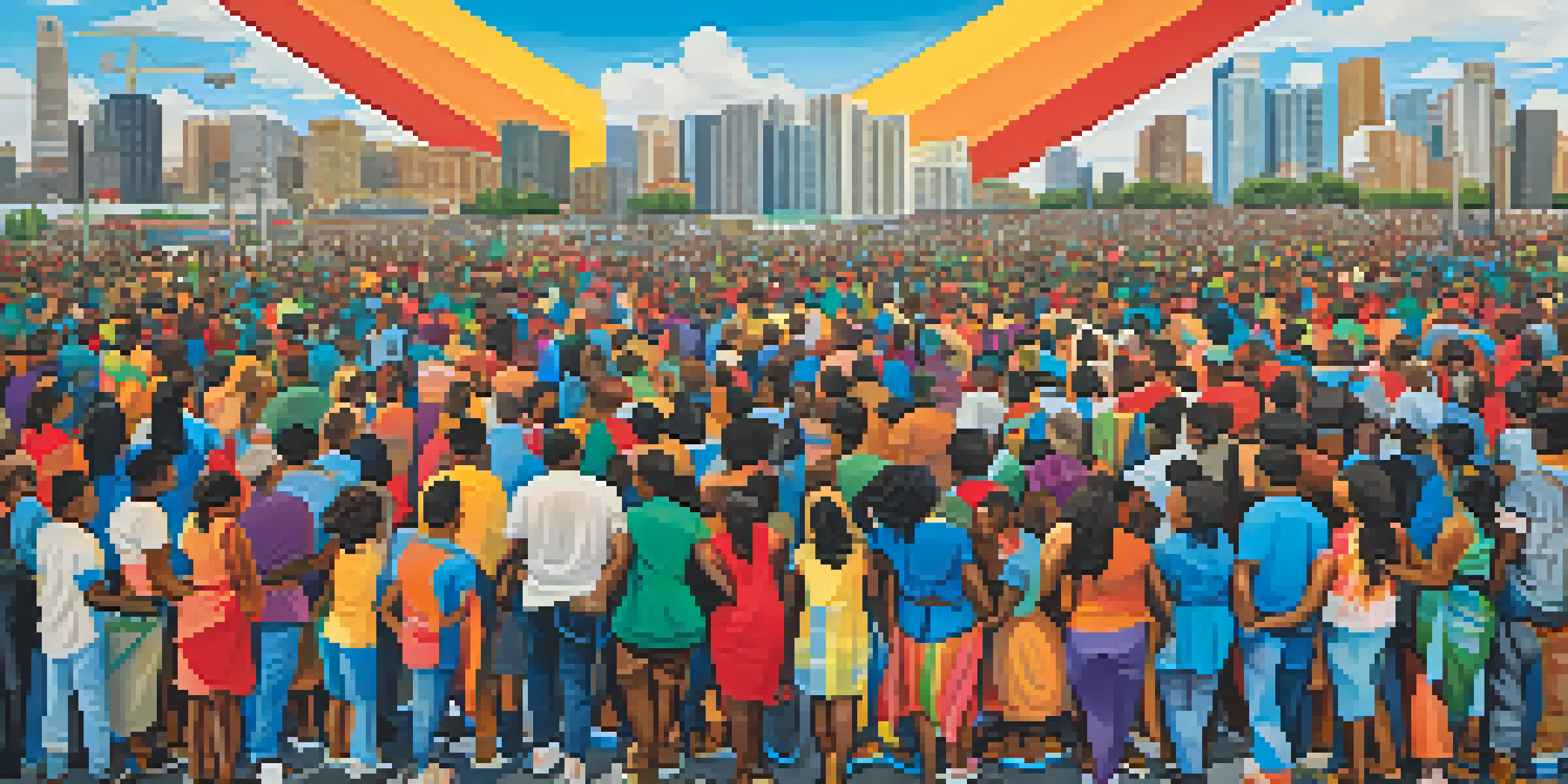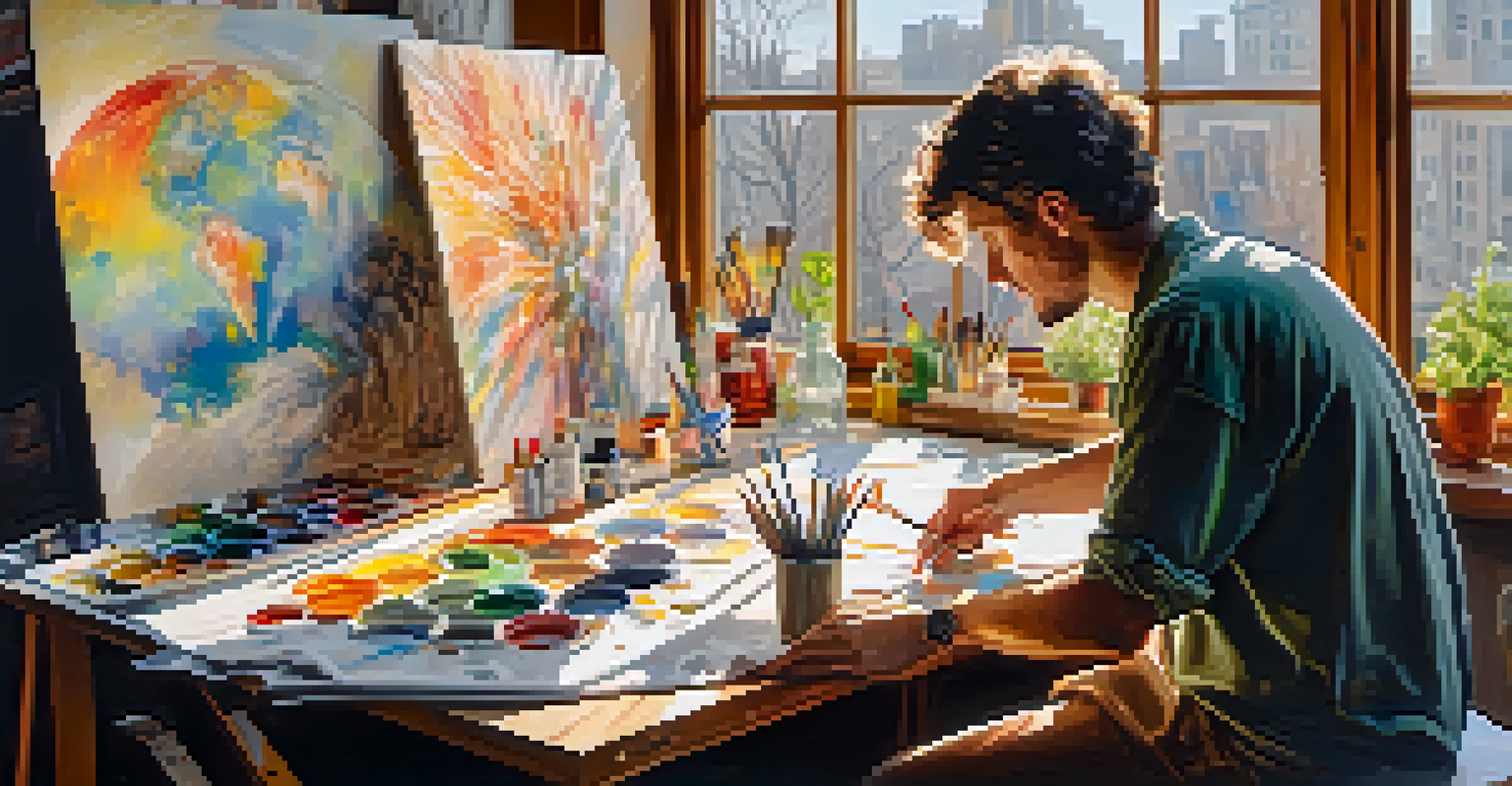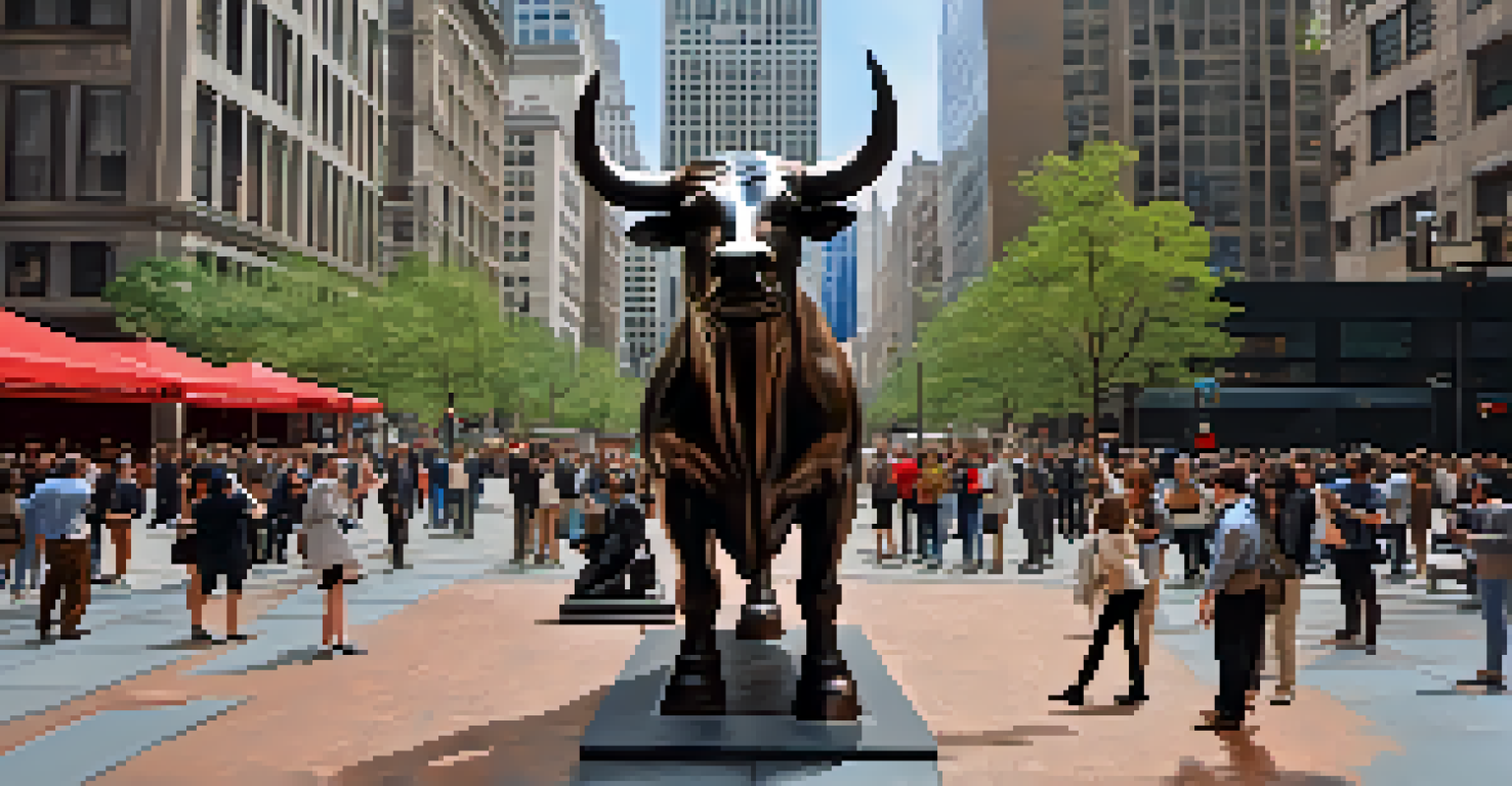Art as Advocacy: The Role of Visual Arts in Policy Change

Understanding Art as a Tool for Advocacy
Art has long served as a powerful medium for expression, and when paired with advocacy, it becomes a tool for change. Through visual storytelling, artists can convey complex social issues in a way that resonates with the public. This emotional connection often ignites conversations that might otherwise remain unheard, allowing art to transcend traditional boundaries.
Art is a weapon in the struggle of ideas, the great equalizer of the oppressed.
For example, consider the iconic works of artists like Picasso, whose 'Guernica' starkly depicted the horrors of war. Such pieces not only raise awareness but also inspire action, urging viewers to reflect on their roles in society. In this way, art becomes more than decoration; it evolves into a catalyst for dialogue and progress.
By merging creativity with activism, artists can reach diverse audiences, making abstract policy issues more tangible. This approach encourages people to engage with topics they might overlook, fostering a sense of community and shared responsibility in addressing societal challenges.
Historical Context: Art in Political Movements
Throughout history, art has played a vital role in shaping political landscapes. From the propaganda posters of World War II to the graffiti that adorned city walls during the Arab Spring, visual arts have been used to galvanize support and challenge authority. These artworks often encapsulate the ethos of their time, serving as both a reflection and a critique of societal norms.

Consider the powerful murals of Diego Rivera, which depicted the struggles of the working class and highlighted social injustices in Mexico. His work not only documented history but also inspired a movement toward labor rights. Such examples illustrate how art can serve as a rallying point for communities to unite and demand change.
Art as a Change Catalyst
Art transcends boundaries to ignite conversations and inspire action on social issues.
This historical perspective underscores the enduring nature of art as advocacy. By examining past movements, we can better appreciate the potential of visual arts to influence policy today, demonstrating that the canvas can be a battleground for social justice.
The Role of Artists in Modern Advocacy
Today, artists continue to leverage their talents for advocacy, using their platforms to address pressing issues like climate change, racial equality, and mental health. By creating thought-provoking pieces, they invite audiences to engage with these topics on a deeper level. Artists often collaborate with organizations to amplify their messages, blending creativity with strategic campaigning.
Every artist is a politician; the only difference is that some artists are more aware of it than others.
Take the case of Banksy, whose street art not only entertains but also provokes thought about capitalism, war, and social issues. His anonymity adds an intriguing layer, allowing the art itself to take center stage and spark conversations worldwide. This illustrates how contemporary artists can wield their influence effectively, making significant strides in advocacy.
Moreover, the rise of social media has transformed the way artists share their work, making it easier to reach global audiences. This digital landscape allows for immediate feedback and interaction, further enhancing the potential for visual arts to impact policy discussions and inspire collective action.
Case Studies: Successful Art-Driven Advocacy Campaigns
Several powerful case studies highlight the effectiveness of art in advocacy. One such example is the 'Fearless Girl' statue, which was strategically placed in front of Wall Street's Charging Bull. This bold installation quickly became a symbol of female empowerment and sparked discussions about gender equality in the corporate world.
Similarly, the 'Art Against Hate' initiative used visual art to confront hate crimes and promote inclusivity in communities. Through exhibitions and public displays, the project engaged artists and activists alike, fostering a dialogue about acceptance and understanding. This collaborative effort showcased how art can unite diverse voices for a common cause.
Historical Impact of Art
Throughout history, art has shaped political movements and served as a voice for social justice.
These examples demonstrate that when art intersects with advocacy, it can create impactful movements. By capturing public attention and inspiring action, art-driven campaigns can lead to meaningful policy changes and a more engaged citizenry.
Art's Emotional Appeal: Connecting with Audiences
One of the most compelling aspects of art as advocacy is its ability to evoke emotions. Visual arts can encapsulate feelings that words sometimes fail to express, making complex issues relatable and accessible. This emotional resonance can motivate individuals to take action in ways that statistics or speeches may not achieve.
For instance, consider the haunting photographs of war-torn regions displayed in exhibitions. These images humanize the statistics, allowing viewers to connect with the individuals behind the numbers. This personal connection can mobilize support and inspire individuals to advocate for policy changes that address these critical issues.
By appealing to our emotions, art can serve as a powerful motivator for change. It encourages empathy, driving home the importance of collective responsibility in shaping a better world.
Challenges Faced by Artists in Advocacy
Despite the potential of art as advocacy, artists often encounter significant challenges. Funding can be a major barrier, as many artists lack the financial resources to produce large-scale works or campaigns. Additionally, navigating the complex landscape of politics and policy can be daunting, especially for those who are not entrenched in these systems.
Moreover, artists may face censorship or backlash for their work, particularly when addressing controversial topics. This can lead to self-censorship, where artists hesitate to speak out for fear of repercussions. The delicate balance between creative expression and societal expectations can pose a significant challenge.
Future of Art in Advocacy
The evolving role of art in advocacy promises innovative engagement and collaboration with policymakers.
Despite these obstacles, many artists persevere, driven by a passion for their causes. Their resilience and commitment to advocacy highlight the importance of supporting artists in their endeavors, ensuring that their voices continue to resonate in the pursuit of social justice.
The Future of Art as Advocacy in Policy Change
As we look to the future, the role of art in advocacy is likely to evolve even further. With advancements in technology, artists have new tools at their disposal, allowing for innovative ways to engage audiences. Virtual reality, for example, can transport viewers into immersive experiences, deepening their understanding of social issues.
Moreover, the growing recognition of the arts as a vital component of public discourse suggests a promising trend. Policymakers are increasingly acknowledging the impact of art on society, leading to collaborations between artists and government agencies. This shift can create more opportunities for artists to influence policy and advocate for change.

Ultimately, the future of art as advocacy hinges on collaboration and community engagement. By uniting artists, activists, and policymakers, we can harness the transformative power of visual arts to drive meaningful change and create a more just and equitable society.